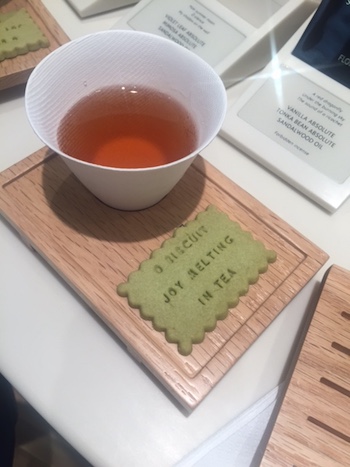Label To Know Patria
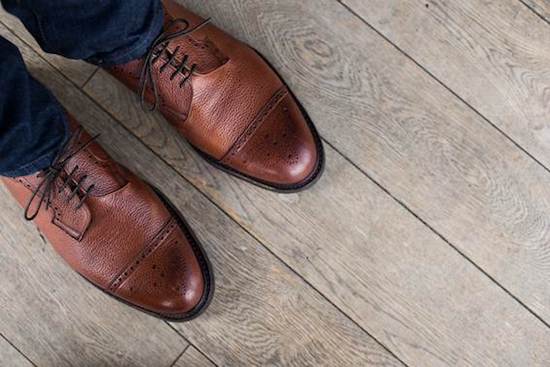
Good things coming to those who wait goes against everything modern retail has taught us. To test this theory, Patria is a new website crowdfunding made in the UK products in aid of Armed Forces Charities. All employees of Patria are veterans and 10% of profits go to the brand’s chosen charities which include The Royal Navy Charity, The Soldiers Charity and the RAFBF.
"Patria is a uniquely British company. We were founded by veterans, employ only veterans and 10% of our profits go to the main armed forces charities. All of our luxury pieces are 100% British made. We wanted a name that ties this together. Patria is derived from the Latin 'Pro Patria' or 'for one's country'," says Founder, Richard Thackray.
Left - Patria’s Cordwainer or shoemaker has been hand-making the finest footwear in Northamptonshire for over 130 years - £275 (Takes 12 weeks)
Launching on Remembrance Day, Patria hopes to deliver the best price in the market and have zero waste. Patria only makes onshore in Great Britain using the best materials and works with leading UK artisanal manufactures - leading to less impact on the environment and a better value product.
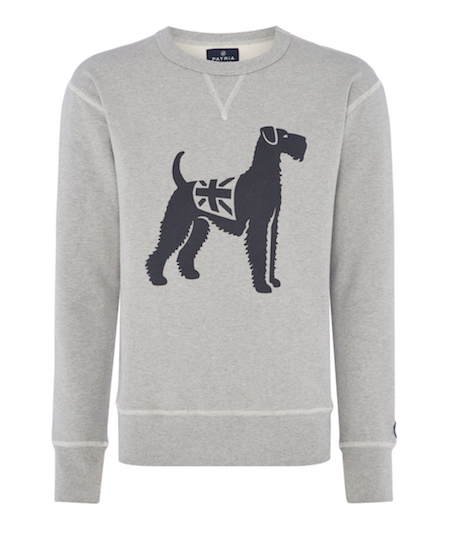
Cashmere jumpers start at £200 and Merino wool from £100.
Patria prides itself in being a non-seasonal brand. Not about trend led pieces, but staple quality and timeless garments that are built to last. The brand even offers mending services to their customers.
Right - Patria ‘Jack’ Sweatshirt - £120
Label To Know Parterre
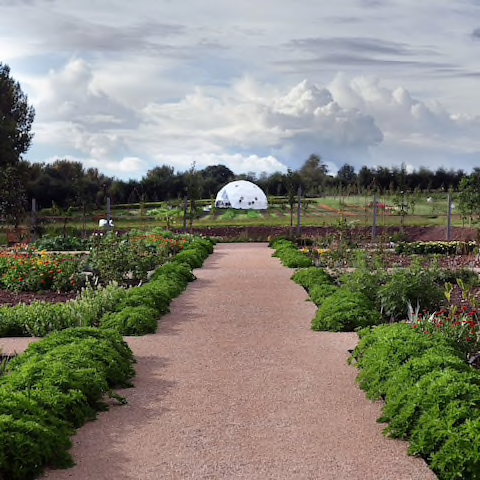
Based on a 50 acre estate called “Keyneston Mill" in Dorset, Parterre - translated as “on the ground” - is a new and experimental British perfume brand aiming to grow many of the ingredients themselves. Two thousand plant varieties to be precise.
Founded by husband and wife, David and Julia Bridger, their backgrounds are farming and graphic design, respectively, Parterre launches with three fragrances, all limited in number and stocked at Fortnum & Mason.
Left - Not the Crystal Maze - Keyneston Mill, Dorset
TheChicGeek says, “Who knew you could grow vetiver in the UK? I always thought it was a tropical grass found in places like Haiti. Soon to be open to the public, Keyneston Mill looks set to be a destination in itself and not just for perfume fans. I can see a Monty Don special coming on!
No budget has been spared here with Sir Elton John’s ex-gardener Stuart Neilson and former RHS botanist Nanette Wraith being brought on board. Design plays an important part in the core of the garden with Renaissance Italy and Kandinsky referenced while the rest of the acreage is put to growing in volume.
Based on botanicals, obvs, the three fragrances, produced in collaboration with leading perfumer, Jacques Chabert, are “A Tribute To Edith”, geranium and rose, “Run Of The River”, bergamot mint and orange flower, and, the most masculine, “Root Of All Goodness”, bergamot, vetiver and leather.

I admire Parterre because they will be at the whim of the unpredictable British weather and, as such, they’re still trying to work out what works and what gives a decent standard of product. They’re also producing the oils themselves using steam distillation.
Right - Parterre - "Root Of All Goodness" - 50ml/100ml - £95/£160
Like the majority of gardens, things will get better with age. Everything seems quite new and experimental, and while the French will probably scoff and turn up their noses, literally and metaphorically, just remember they did that once to English sparkling wine and look how far that has come.
It would be nice to see which of the ingredients are homegrown - maybe a Union flag next to them? - I do think they’re missing a trick not doing at least one fragrance with 100% British grown ingredients, but I’m sure, in time, that will come. Also, they should use a British perfumer or try doing it in-house.
This plugs into the British obsession with plants and gardening and being able to visit and see the place will only add to the attraction. Of the three fragrances, the most masculine is the “Root Of All Goodness”, but I was drawn to the rose one. Men can wear pink and smell of roses, these days. I like the branding, it is fairly feminine, but the hand calligraphy numbering on the bottles is a nice touch. I’d just love to know what they could do with the stinging nettles, bindweed and Japanese knotweed in my garden!”
Label To Know Eiger Classic

You don’t run before you can walk in fashion, let alone ski! Founded in 2014, Eiger Classic is a small British and British-made brand inspired by one of the founders' grandmothers.
“The brand is inspired by my Granny and her photos from when she was British downhill champion. She was also a keen photographer and we have loads of old photographs of these amazing expeditions they used to go on. We were totally inspired and wanted to try and recreate the timeless alpine look and as a result ‘Eiger Classic’ was founded."
Left - The Viscount Montgomery - £95 - “Warm on the slopes, cool as f@ck in the bar”
“We produce a range of leather products, but our main focus is merino wool jumpers that are all produced in Britain,” says Chris Pratt.
Chris and fellow founder, Tom Evans, still juggle full time jobs, a farmer and creative director, respectively, while producing a range of knitwear and small leather goods.
“We got into menswear because we wanted to buy products like we are producing and couldn't find anyone doing them so it was a case of doing it ourselves.
“Our range will stay pretty much the same. We will just look to add a few styles each year, we have two new jumpers coming out in the next couple of weeks. We are not looking to produce products that go in and out of fashion, we are looking to produce products that reflect a classic alpine age and are made to last,” says Chris.
Chris’ Granny’s name was Joan Shearing, and then Joan Hanlin. She was a British Downhill ski champion and won on borrowed skis in her 40's. Super Gran!
Below - The Arnold Lunn - £178
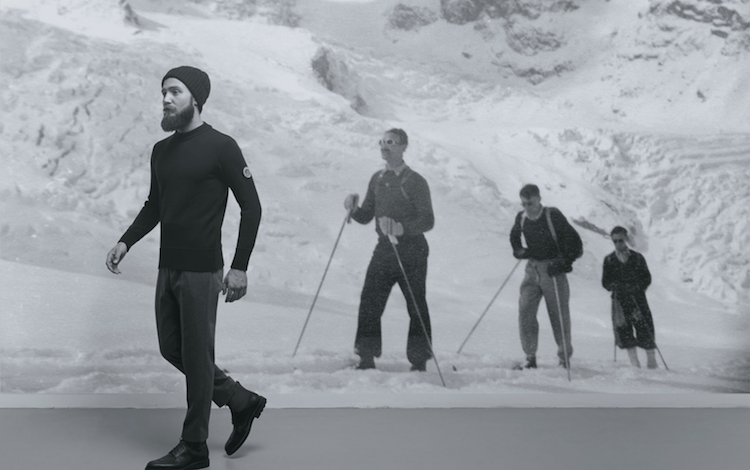
Label To Know The Cords & Co
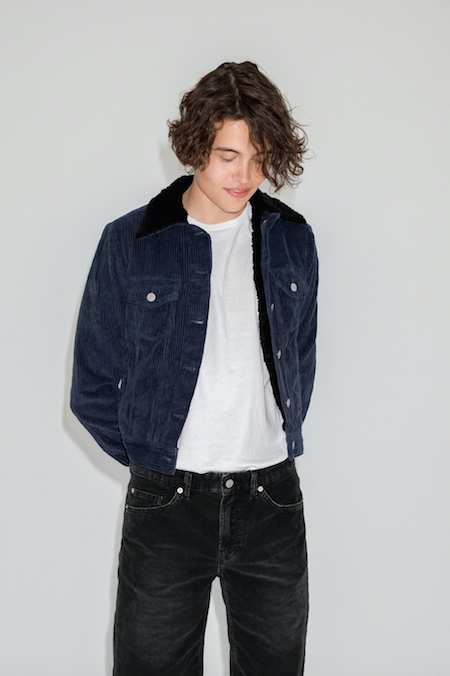
It was with serendipity, just as the first AW17 shows were coming through, that I walked past the The Cords & Co. stand at Pitti Uomo in January last. I won’t bore with the fashion clichés of corduroy being the cloth of kings or geography teachers, but what you do need to know is that it’s everywhere and the main trend story for AW17.
Left - The Cords & Co aiming to be “the world’s first corduroy brand”
Giving themselves the title of “the world’s first corduroy brand”, this new Swedish brand is hoping to be to corduroy what Levi’s is to denim and you wonder why nobody has tried this before. They probably have, but not within the last couple of decades in my memory.

The Cords & Co is going big, planning to open 6 flagship stores in New York, Paris, London, Los Angeles and Stockholm, - doesn’t say where the sixth one is?! - as well as a global online shop and plus wholesale partners.
Right - The Cords & Co - Cut Poppy Red - £180
“The Cords & Co is created by a passionate group of people united by a shared love of corduroy. By exploring new ways to work with corduroy in our Stockholm design Studio, highlighting its long but little known history, and working closely with a carefully curated group of collaborative partners and cultural tastemakers in each of our flagship city locations around the world, we’re excited to share our unique story of a fabric everyone has a connection to, yet no other brand has dedicated themselves entirely to it,” says Omar Varts, CEO.
It’s about time corduroy got some love. A practical yet smart material, it’s an easy option especially in the simple styles The Cords & Co. are offering. The best look is matching you jacket to your trousers to give you a 70s casual jean-suit feel.
The brand's images are a bit disappointing for a launch, keeping it too simple and I just hope they give the stores more life and branding as corduroy is ripe for personality and Scooby Doo adventures.
Below - The Cords & Co - Trousers - £125
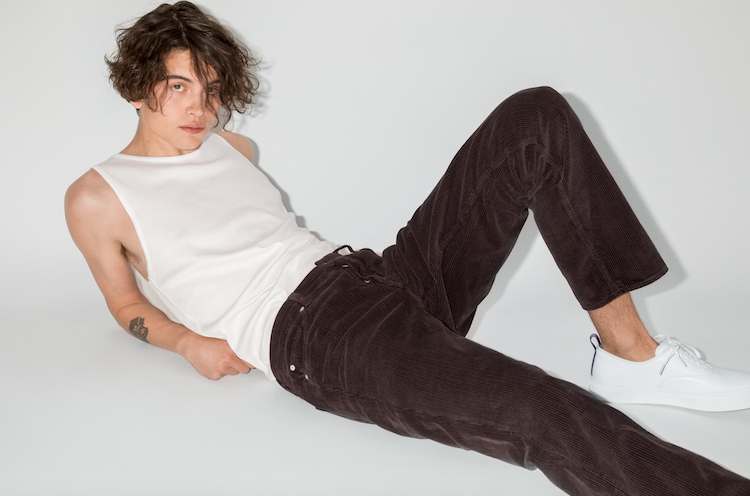
Label To Know Floraïku
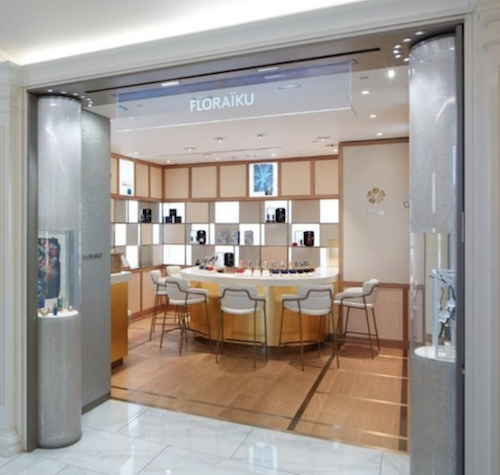
Last week, Harrods unveiled the expansion of its Salon de Parfums area on the top floor of the store. Seven new fragrance boutiques have been added including Penhaligon’s, Armani Privé, Burberry, Sospiro, Frédéric Malle, Bond No.9 and, brand new and world exclusive, Floraïku.
Left - The new Floraïku boutique at the extended Salon de Perfumes in Harrods

The Japanese-inspired, Floraïku, has been created by John and Clara Molloy, the couple behind ‘Memo Paris’, available at Harvey Nichols.
Directly inspired by Japan, the collection of eleven fragrances are based on Japanese poems - haiku - engraved on each bottle. Three ‘ceremonies’ make up Floraiku: Secret Teas and Spices, Enigmatic Flowers and Forbidden Incense, each
of them composed with three different perfumes.
The colour of the bottles, navy blue, white and black ensures recognition. A final ceremony is added to the previous three: Shadowing. Composed of two perfumes, with a red bottle, it allows, if they are affixed near a fragrance of one of the other three collections, to make it deeper or lighter.
Right - My favourite - Between Two Trees
Unveiled in a box inspired by a Japanese bento box, each fragrance of 50ml is presented with its travel spray, which also serves as a stopper. A refill of 10ml for the vaporiser completes this box. All perfumes and travel refills are refillable.
Left - Sit down for tea & a biscuit & sample the fragrances
TheChicGeek says, “This is a new take on fragrance and at first I thought it was Japanese. Japanese fragrances are usually very light. Because this is French, they are of a more European strength.
They are beautiful, so too is the packaging and the boutique. Looking like a tea house, you sit at the counter and are served tea and a biscuit - always a winner - while a wooden stand allows you to work through the collection. My favourite was one of the ‘shadows’ - ‘Between Two Trees’.
This is expensive, around £250, but without the usual bling you find at this level and smells very natural. I find it interesting how confident John and Clara Molloy must be to appropriate Japanese culture like this. It’s a difficult thing to get right when its not your own culture. I really like it, but I would love to know what the Japanese think”.
Below - The testers are arranged on this board to experience the different categories & 'shadows'
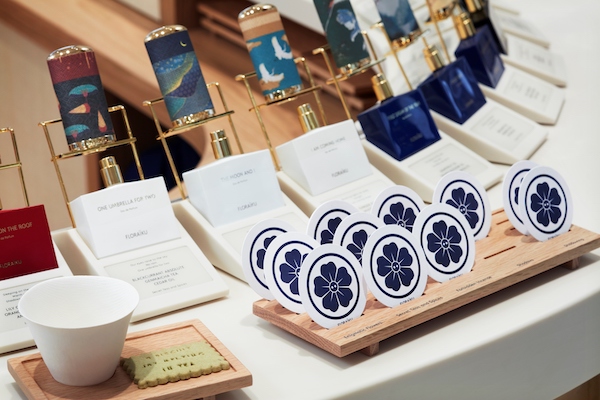
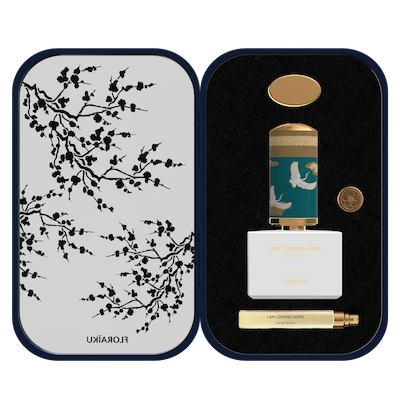
Left - The fragrances come in a bento style box with the travel spray stopper & cartridge
More...
Label To Know BIEL-LO
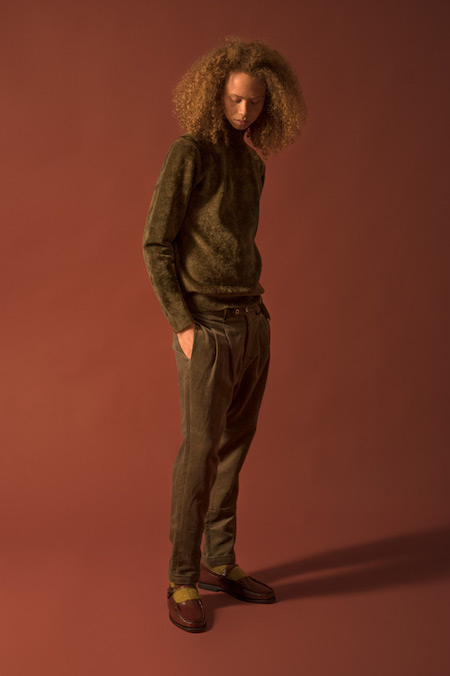
The modern way of shopping for something of quality often involves a little bit, but not too much - you can always ask TheChicGeek, of legwork to find the source. What I mean by this is, the majority of brands don’t make their own products. They use the ‘Private Label’ system of getting quality manufacturers to produce their goods. Often these manufacturers have their own in-house labels, producing products of the same quality without the designer mark up. While not cheap, you’re getting much better value for money.
One brand which fits this bill is the Spanish BIEL-LO. Carrying on a 25-year old tradition of expert craftsmanship, BIEL-LO produces fine quality knitted garments and accessories in the mountains of La Llacuna, Barcelona.
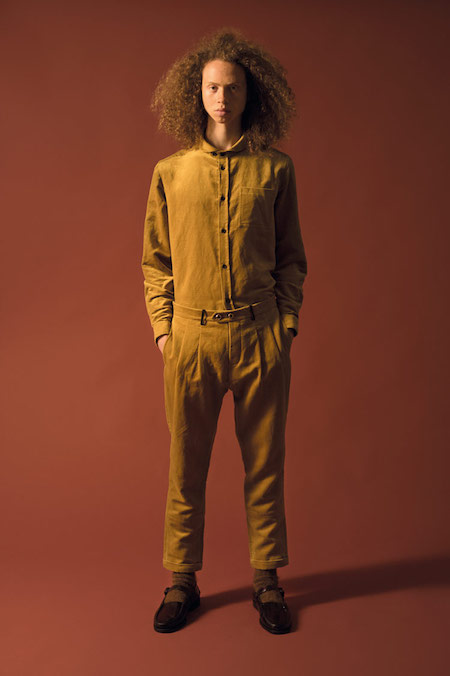
BIEL-LO constructs timeless pieces using small-scale production to provide you with their personal hallmark: each and every item has been made to delight and be cherished. The hand-finished garments are designed to ensure functionality and warmth, year after year.
Left & Right - BIEL-LO AW17
Currently stocked at Dover Street Market Tokyo and NYC, Tomorrowland, American Rag Cie, Merci, My Boon, the new AW17 collection is a collection of the must have earth colours and textured finishes like corduroy.
To be honest, these pictures don't do the clothes justice and it would be nice to see them in a UK stockist where you can see the quality for yourself. It’s also got that slightly eccentric edge and point of difference that you find around the Barcelona area.
Below - The BIEL-LO factory
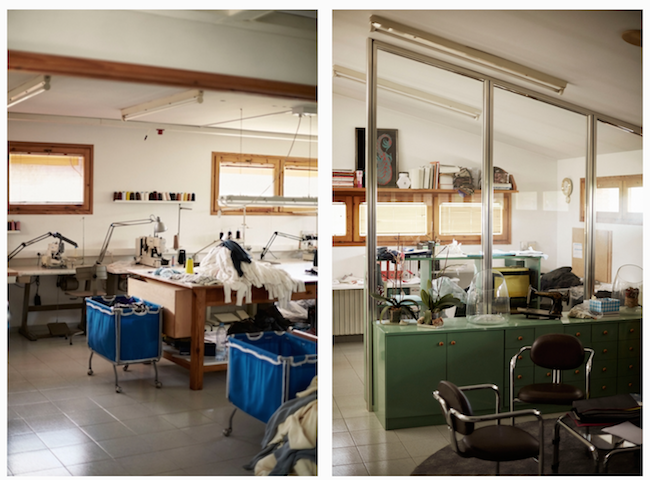
Label To Know - Rowing Blazers
 The sport of rowing is dominated by the stereotypes of posh athletic giants called ‘Constantine’ or ‘Toby’. Their arrogance only surpassed by their prowess with a couple of oars and the Lycra in their rowing suits. But, off-duty they stick to tradition and continue to wear their team colours. The blazer was invented to be part of the rowing fraternity's uniform and as part of British culture, and our continual love affair with uniforms, it often takes an outsider to see and appreciate what we have and repackage and present something that has always existed.
The sport of rowing is dominated by the stereotypes of posh athletic giants called ‘Constantine’ or ‘Toby’. Their arrogance only surpassed by their prowess with a couple of oars and the Lycra in their rowing suits. But, off-duty they stick to tradition and continue to wear their team colours. The blazer was invented to be part of the rowing fraternity's uniform and as part of British culture, and our continual love affair with uniforms, it often takes an outsider to see and appreciate what we have and repackage and present something that has always existed.
Just when we thought ‘preppy’ was dead and wasn’t coming back for a while, we see green shoots appearing, and a new label like ‘Rowing Blazers’, reinventing and adding more fun to this seasonal British style.
Founded by Jack Carlson, a three-time member of the United States national rowing team, Rowing Blazers’ aim is to reintroduce one of the originals in men’s sportswear. The days when ‘sportswear’ still meant you wore a tie. He won a bronze medal for the U.S.A. at the 2015 World Championships and has also won the Head of the Charles Regatta, Henley Royal Regatta, and Royal Canadian Henley Regatta. Jack earned his doctorate in archaeology at the University of Oxford and is the author of the book Rowing Blazers (Thames & Hudson, 2014).
Left - Jack Carlson, founder of the American rowing blazer specialists, Rowing Blazers
Impressed the brand’s website and his passion for reintroducing this loud heritage style, I sent him a few ChicGeek questions to find out more:
CG: Why the fixation on rowing blazers?
JC: I spent a long time in the sport of rowing: nearly two decades, including three years on the US national team, so I've been immersed in this world for a while. But I've also been very interested in heraldry and in the visual and sartorial trappings of status and hierarchy for a long time as well. And I think the blazers that are traditional in the sport of rowing bring together all of those interests: menswear, heraldry, and the sport of rowing.
CG: When did you start? And what was the Eureka moment?
JC: I first competed at Henley Royal Regatta in 2004. My crew was knocked out in the first round, which was pretty disappointing. But it meant I had a great deal of time to spend in the spectator enclosures for the rest of the week, where I began chatting with other current and former rowers about their jackets and the stories and traditions behind them. I thought: someone should study these things, write a book about them. Six or seven years later, I realised I should be the guy to do it. The book came out in 2014, and the company - making blazers by hand, and incorporating a lot of details, traditions and construction techniques I came across while creating the book - launched this year.
 CG: How have you found the reception to them?
CG: How have you found the reception to them?
JC: People from all sorts of different backgrounds love what we're doing. Menswear nerds love the research that has gone into everything we do and the quality of the construction and materials. The rowing community respect the authenticity and pedigree of what we're doing. The Japanese - we have a significant following in Asia - love the fact that our pieces are handmade in America. We've even had a positive response from many streetwear fanatics, who like the irreverent spirit, the cryptic Latin graffiti, and the graphics on our caps and badges.
Right - Rowing Blazers - Croquet Stripe Blazer - $995
CG: What would you say to those people who say that preppy is dead or is out of fashion?
JC: Preppy is dead. Long live preppy. I hate much of what that word has come to signify, and I think much of what it's come to signify is pretty dead for now. I think the consumer - at least the higher end menswear consumer - wants something with authenticity, with a story, a sense of meaning behind it. This consumer wants to know where, how, why, and from a product was made. Our pieces have tremendous depth to them; from the 3-roll-2 silhouette of our blazers, to the small embroidered faucet motif on our ties, there's a story and a reason behind every decision; and our pieces are all handmade in the US. So our collection is very different from much of what is usually considered to be "preppy" nowadays; but blue Oxford cloth button downs; flannel blazers - in navy or more outrageous colours; and webbing belts will never go out of style.
CG: Do you mostly concentrate on rowing teams and clubs or are you targeting a fashion consumer?
JC: We are a menswear brand first and foremost, but we are also proud to make blazers for a wide range of rowing teams and clubs, including Britain's most prestigious rowing club, Leander Club in Henley-on-Thames. We've also created blazers for rowing clubs in China - which is pretty cool considering we make everything in Manhattan; Oxford Brookes; the University of Texas - for whom we made blazer-cowboy jacket hybrids; and many other clubs, schools and universities.
CG: I’ve always loved the British Army blazer that I saw at Henley, would you make one of those?
JC: We might do something in camo, but we are always very careful to be respectful of existing club blazers, and would never "knock off' any institution's blazer.
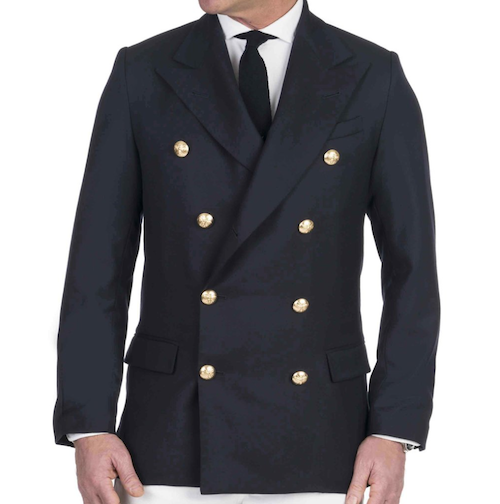 CG: What’s your favourite style & why?
CG: What’s your favourite style & why?
JC: My favourite piece in our collection is the 8x3 double breasted blazer, which is inspired by a blazer Prince Charles always wears. One never sees an 8x3 double breasted blazer on the market, so we had to make one. With five cuff buttons, an oversized front button from a vintage die, and a perfect fit, it came out brilliantly.
Left - Rowing Blazers - 8X3 Double Breasted Blazer ‘Prince Charlie’ $1095
CG: Do you ship to the UK? Isn't this a bit like taking coals to Newcastle?!
JC: We ship worldwide. Although the UK is the land of the blazer, no one is doing what we are doing: it's our commitment to quality and traditional techniques that's enabled us to become the official blazer supplier to Leander Club, Oxford Brookes University Boat Club and many other British institutions while making everything in New York. We are chatting with several British menswear retailers about going into their stores as well, and they understand that we are a high end brand with a unique product; they wouldn't be looking at us if they viewed us as a school uniform supplier!
CG: What would you say to those people who say rowing is elitist?
JC: Rowing has its roots in Oxbridge, but also the far more blue collar world of professional sculling. It developed not only through public schools and the Putney clubs, but also through many working man's clubs around England. Today many still associate the sport with Oxbridge because of the prominence of the Oxford-Cambridge race, but the truth is the sport is becoming more accessible and more universal all the time. British Rowing has done a great job bringing the sport into many new communities in the UK. I'm part of an organisation in the US, here in New York, called Row New York, which is a highly competitive rowing program for kids from the city's underserved communities. They've just qualified a boat for the national championships for the first time, which is fantastic to see.
CG: What’s the future for Rowing Blazers?
JC: We’ll be expanding into a few other categories and also expanding our retail footprint; we have a lot of pop-ups planned, including at Henley and Goodwood Revival; and we'll be going into a number of stores in Japan, Taiwan and China in the next few months. We have some cool collaborations planned with Merz b. Schwanen, a very cool and historic German knitwear manufacturer, and a few other exciting brands. We are really just getting started.
CG: You don’t just sell blazers? What else do you sell?
JC: We also make shirts in a few different styles. They are pretty unique because they are hand-distressed - here in the US! - and come with or without busted seams. They've been a hit with the more street-oriented customer actually. We also do hats, belts, ties -- many featuring satin-stitch embroidery, or hand-embroidered wire bullion motifs - and a wide range of rare, funky and quirky vintage product.
